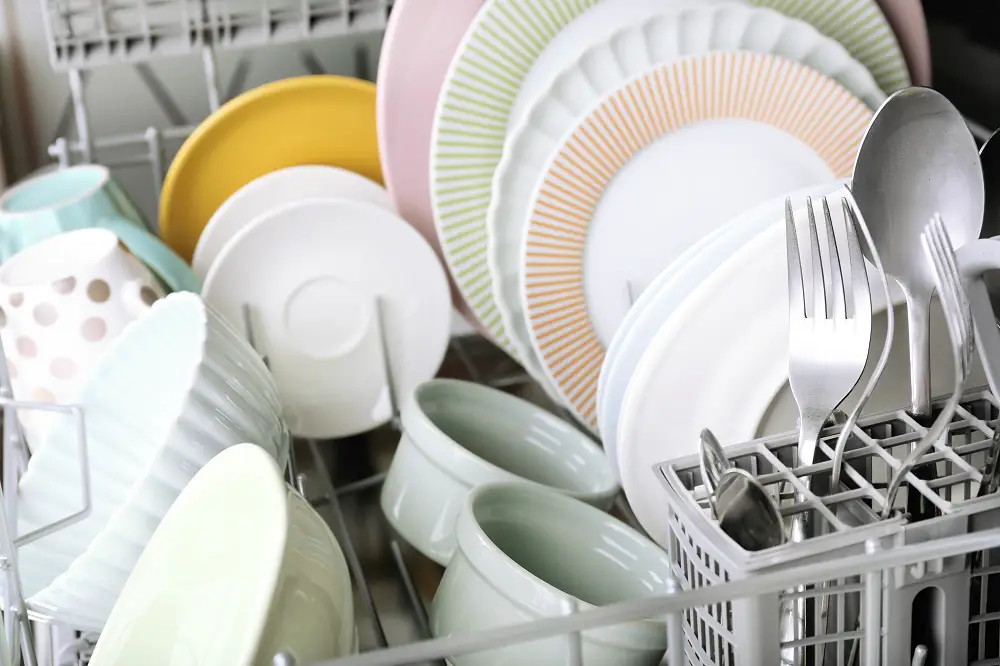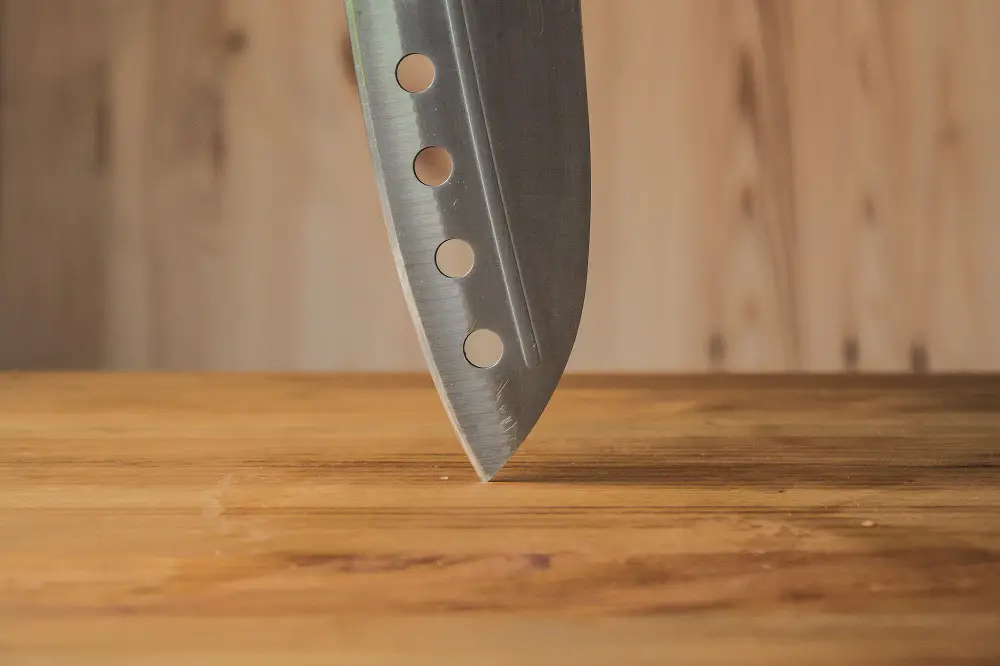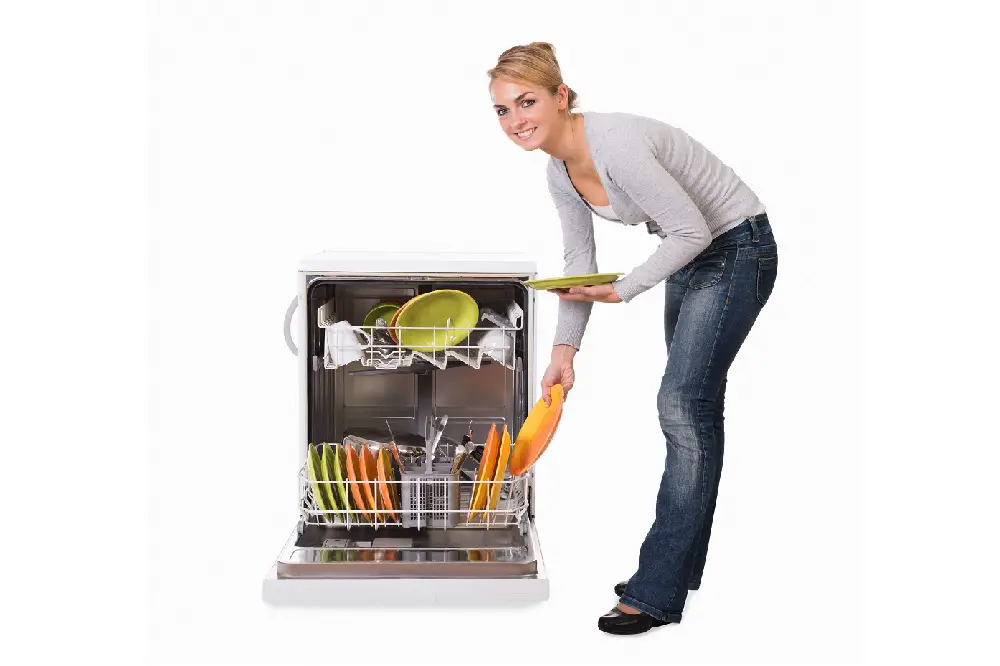Portable dishwashers are designed to wash your dishes efficiently, helping save time and energy. So, it can be frustrating to find your portable dishwasher not cleaning as well as it should. Often, the reasons for this have simple fixes.
Common reasons your portable dishwasher doesn’t clean include unicoupler problems, clogged drain hose, clogged filter, dirty interiors, or incorrect loading.
Once you’ve figured out why your dishes come out dirty after a wash cycle, you can make the necessary fixes yourself.
Here’s all the information you need to determine the cause and the fixes for your portable appliance not cleaning properly.
Table of Contents
Most Common Reasons a Portable Dishwasher Doesn’t Clean
Multiple reasons could cause your portable dishwasher to not clean properly. Rule out each cause before checking for the next one.
1. Unicoupler Problems
The unicoupler is the component that connects your portable dishwasher to the kitchen faucet. If the unicoupler isn’t functioning correctly, it can cause your dishwasher to not clean properly.
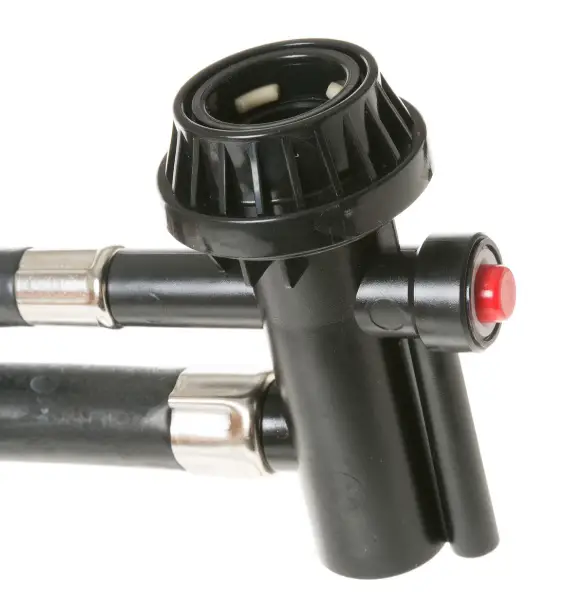
The unicoupler could become clogged or blocked, preventing sufficient water from flowing into the dishwasher. Damaged or worn-out unicouplers could cause leaks, leading to loss of water pressure and preventing the dishwasher from cleaning dishes properly.
Moreover, if the unicoupler isn’t correctly attached to the faucet, it can cause leaks or reduce water flow. This affects the dishwasher’s cleaning performance.
Check our guide on how to fix a broken unicouple (or replace it).
How To Fix Unicoupler Problems?
If the dishwasher unicoupler has signs of wear or damage, replace it or fix it with a repair kit immediately.
Ensure the unicoupler is securely attached to the faucet without any loose connections. If there are clogs in the unicoupler hoses, use a hose cleaner to clear the clogs.
2. Clogged Drain Hose
The dishwasher drain hose expels the dirty water from the appliance. At times, food particles or other items that collect in the dishwasher can clog the drain hose.
It could also be an internal build-up of sludge that causes backups and clogs.
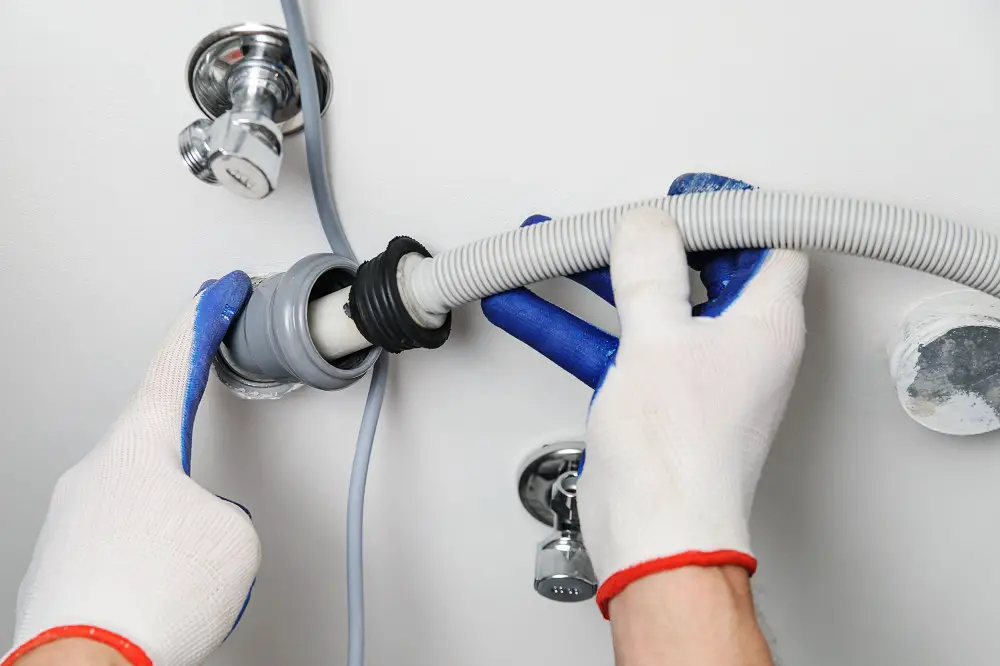
A clogged drain hose won’t be able to get rid of the dirty water, resulting in reduced dishwasher efficiency.
How To Fix a Clogged Drain Hose?
Inspect your dishwasher drain hose for clogs. If there are any, use a hose cleaner to clear them.
You could also try vinegar and baking soda solution, followed by a hot water rinse to loosen up and break the clogs.
Techjut tip: Regularly maintain your dishwasher to avoid drain hose clogs.
Check How to Clean A Portable Dishwasher Drain for more details.
3. Clogged Filter
During a wash cycle, your dishwasher filter catches residual food particles and other debris from the dishes.
The appliance’s water flow is disrupted if the filter is clogged with debris. The dishwasher will not function properly with a clogged filter.
There’s also the possibility of the debris being redeposited on the dishes during the wash cycle.
How To Fix a Clogged Filter?
If you find that your filter is clogged, you must clean it.
Remove the dishwasher rack (lower rack for free-standing models) to access the filter. Unlock the filter unit at the bottom and pull it out.
Clean the filter under running tap water.
Use an old toothbrush to scrub away any stubborn debris inside the filter. Avoid using abrasive items to clean; it may cause damage.
Once the filter is cleaned and dried, place it back in the dishwasher.
Techjut tips:
- It’s good practice to clean the filter regularly. If you use your dishwasher daily, clean the filter once a week.
- Knock off any leftover food from your plates and other dishes before loading them into the dishwasher. This reduces the possibility of clogs.
4. Dirty Dishwasher Interior
During wash cycles, the residual food and grease on your dishes can wash off, only to build up on the inside of the dishwasher tub.
Residue buildup, soap scum, and hard water mineral deposits in the dishwasher interior prevent it from cleaning dishes effectively.
How To Fix a Dirty Dishwasher Interior?
A vinegar cycle will help clean the dirty interiors of your portable dishwasher.
Pour three cups of distilled white vinegar onto the dishwasher tub’s floor and run the longest cycle.
The vinegar helps dissolve light mineral buildup, removes residual buildup from the interior walls, and clears out any gunk from the spray arm holes.
Techjut tip: Run a vinegar cycle once a month to keep your dishwasher’s interior clean.
5. Detergent Quality and Quantity
Among the common reasons your portable dishwasher isn’t cleaning is when you use substandard detergent or too much detergent.
Using a low-quality detergent won’t clean your dishes effectively. And using too much detergent can cause residue build up on dishes. On the other hand, using too little detergent won’t suffice to clean the load of dishes.
How To Fix Detergent Quality and Quantity?
Consult the manufacturer’s recommendations for the detergent type and quantity.
If using powder detergent, start with one tablespoon per load. You can add more if needed.
Techjut tips:
- Use dishwasher tablets instead of liquid, powder, or gel detergents in freestanding dishwashers to reduce film on your dishes.
- Countertop dishwashers have a reduced capacity; avoid using dishwasher tablets in countertop models since they require much less detergent.
- Use rinse aid to help reduce the mineral buildup of hard water. It also helps in optimal washing and drying performance.
- Avoid using old, clumped detergent; use fresh detergent stored in a cool, dry place.
6. Incorrect Loading of Dishes
If you assume your dishwasher will clean your dishes efficiently, no matter how you load them, it won’t.
Improper loading can impact your portable dishwasher’s cleaning performance.
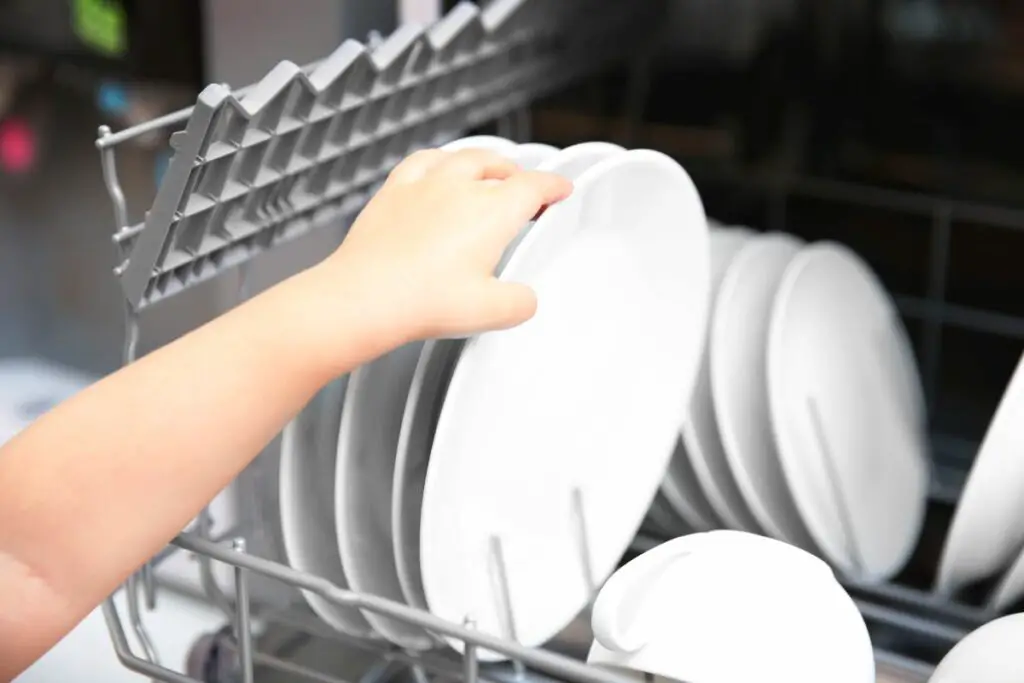
When you don’t load your dishwasher correctly, it may obstruct the free movement of the spray arms. If you keep your dishes overlapped or not placed at an angle, water won’t reach these dishes to clean them thoroughly.
Then, you’ll have to run another load to clean the few dirty items after one wash cycle.
How To Fix Incorrect Loading of Dishes?
Load the dishwasher correctly for better cleaning. The instruction manual will explain the correct way to load the machine.
Place the dishes soiled-side down and inward toward the spray arms. Leave gaps between the items for water to spray easily into them.
Arrange glasses, mugs, small bowls, and cups in the upper rack. Place large bowls, plates, silverware, and cookware in the bottom rack. The larger items are best placed at the back. Keep the items at an angle, facing toward the dishwasher’s center.
Techjut tips:
- Avoid overloading your dishwasher to jam in as much as possible in one load.
- Always check if the spray arms can rotate freely after loading the dishwasher.
- Only dishwasher-safe dishes must be washed in the dishwasher. Avoid loading anything with labels or stickers in the appliance.
7. Water Supply Issues
Problems with your home’s water supply or water lines could cause your dishwasher to not clean properly.
Reduced or fluctuating water pressure in your faucet will cause insufficient water supply for a wash cycle.
However, certain faulty dishwasher elements can also be the cause.
How To Fix Water Supply Issues?
Check your water supply at different outlets in your home to ensure it’s a central supply problem.
Flush the water lines or call for a professional to address the issue.
If the water pressure seems fine in other faucets, it could be an issue with the sink faucet you’re using for your dishwasher. Consider fixing the sink faucet or replacing it.
If the sink faucet’s water pressure also seems normal, the cause is faulty dishwasher components, like the float or inlet valves. Whichever it is, you can get it replaced.
8. Low Water Temperature
Dishwashers require a water temperature of at least 120oF to clean dishes efficiently.
While some dishwashers have a heating element to heat the water to the appropriate temperature, some don’t have this feature. In such cases, you must rely on an external water heater to supply the hot water.
We do have a complete water temperature guide for you here.
How To Fix Water Supply Issues?
If you’re using a water heater, ensure it’s set to 120oF. Anything higher than this temperature might be too hot and could cause scalding.
Additionally, you can run the sink faucet for about 30-60 seconds till hot water starts running from it. Then, connect the unicouple or inlet valve to the faucet.
9. Broken Inlet Valve
The dishwasher’s inlet valve allows water to flow into the machine.
A faulty inlet valve can cause an insufficient water supply to the dishwasher, leading to improper cleaning.
A faulty inlet valve will make a hammering sound during the wash cycle.
How To Fix a Broken Inlet Valve?
Replace the faulty inlet valve with a new one. You can check the owner’s manual for information on parts and replacement.
However, fixing it is a complicated process. Calling a technician to do it for you would be best.
10. Hard Water
If your home receives a hard water supply, you’ll notice chalky residue on anything it touches. Hard water contains minerals like magnesium and calcium.
The minerals in hard water can cause residual buildup in your dishwasher and also result in ineffective cleaning. Moreover, mineral deposits can reduce the lifespan of your dishwasher.
If you find white residue on your plates and glassware, it’s most likely hard water stains. Detergent efficiency also reduces with hard water.
How To Fix Hard Water Issues?
Use a hard water test kit to test if your home has a hard water supply. If it indicates hard water, install a water softener system on your home’s main water line.
Techjut tip: Run a hot water cycle using vinegar in your dishwasher.
11. Clogged Spray Arms
The rotating spray arms of your dishwasher have tiny holes called jets that spray water with pressure over your dishes.
Occasionally, the spray arm holes may clog from food debris or hard water scaling.
Clogged jets could impact the pressure of water being sprayed.
Blocked spray arm nozzles also won’t be able to distribute water adequately, preventing the detergent tablet from dissolving.
How To Fix Clogged Spray Arms?
Clear any clogs in the spray arm nozzles. You can detach the spray arms and use a toothpick to clean its nozzles. Gently scrub the spray arms with some warm water and soap. Then, rinse them thoroughly under running water.
Wipe them dry and place them back in position in the dishwasher.
12. Wrong Cycle Selection
Most dishwashers have different cycle options to suit different load types. The different cycles have different wash features.
For example, the Heavy cycle is the best option for heavily soiled dishes. Similarly, most dishwashers have the Delicate or Glass cycle for delicate glass items.
If your dishwasher has an Auto cycle option, it can sense the soil levels on your dishes and will optimize the cycle accordingly.
When you select the wrong cycle for your load type, your dishwasher won’t be able to clean efficiently.
How To Fix Wrong Cycle Selection?
Select the right wash cycle for the dishwasher load.
If you’re uncertain about the appropriate cycle, refer to the instruction manual for more information.
13. Broken Soap Dispenser
Typically, the soap dispenser of most dishwasher models is built into the door. You must load the detergent into it, and it gets dispensed appropriately during the wash cycle.
A soap dispenser that isn’t working properly won’t dispense the detergent at the right time, and the detergent may not reach the dirty dishes for effective cleaning.
How To Fix Broken Soap Dispenser?
Often, a jammed spring in the dispenser door is the cause. Use a small brush to clean the springs and soap dispenser.
For any residual grease or debris along the inside of the dishwasher door, use a mixture of vinegar and hot water to clean it.
If the spring is broken, you must replace it. While you’re at it, check the door’s gasket. A cracked gasket will need replacement.
Techjut tip: When loading the dishwasher, ensure no items block the detergent dispenser when the door is closed.
Conclusion
Portable dishwashers are most efficient in washing dishes, with regular maintenance. If your dishes come out dirty after a wash cycle, it could be due to one or more reasons.
A few reasons for your portable dishwasher not cleaning properly include problems with the unicoupler, drain hose, water supply, or dishwasher components. Some other causes are dirty interiors, insufficient or wrong detergent, or wrong cycle selection.
Most of these causes have simple fixes. However, if your dishwasher is still not cleaning properly after you’ve done the necessary fixes, it’s best to call for professional help. And if it’s an old appliance, it’s probably best to swap it for a newer model.
